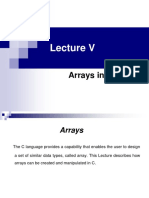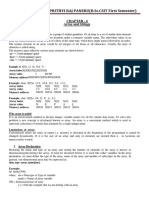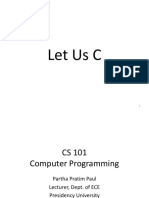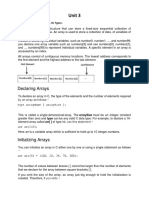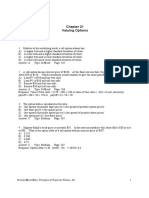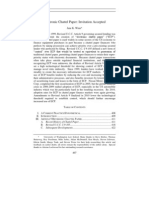0% found this document useful (0 votes)
18 views27 pagesArrays Lecture Notes
The document provides an overview of arrays in C programming, including their definition, declaration, assignment, and input/output operations. It explains the structure of arrays, including elements and indices, and covers the initialization of arrays and bounds checking. Additionally, it introduces two-dimensional and multi-dimensional arrays, as well as parallel arrays, with examples of usage and programming practices.
Uploaded by
ben munjaruCopyright
© © All Rights Reserved
We take content rights seriously. If you suspect this is your content, claim it here.
Available Formats
Download as PDF, TXT or read online on Scribd
0% found this document useful (0 votes)
18 views27 pagesArrays Lecture Notes
The document provides an overview of arrays in C programming, including their definition, declaration, assignment, and input/output operations. It explains the structure of arrays, including elements and indices, and covers the initialization of arrays and bounds checking. Additionally, it introduces two-dimensional and multi-dimensional arrays, as well as parallel arrays, with examples of usage and programming practices.
Uploaded by
ben munjaruCopyright
© © All Rights Reserved
We take content rights seriously. If you suspect this is your content, claim it here.
Available Formats
Download as PDF, TXT or read online on Scribd
/ 27













